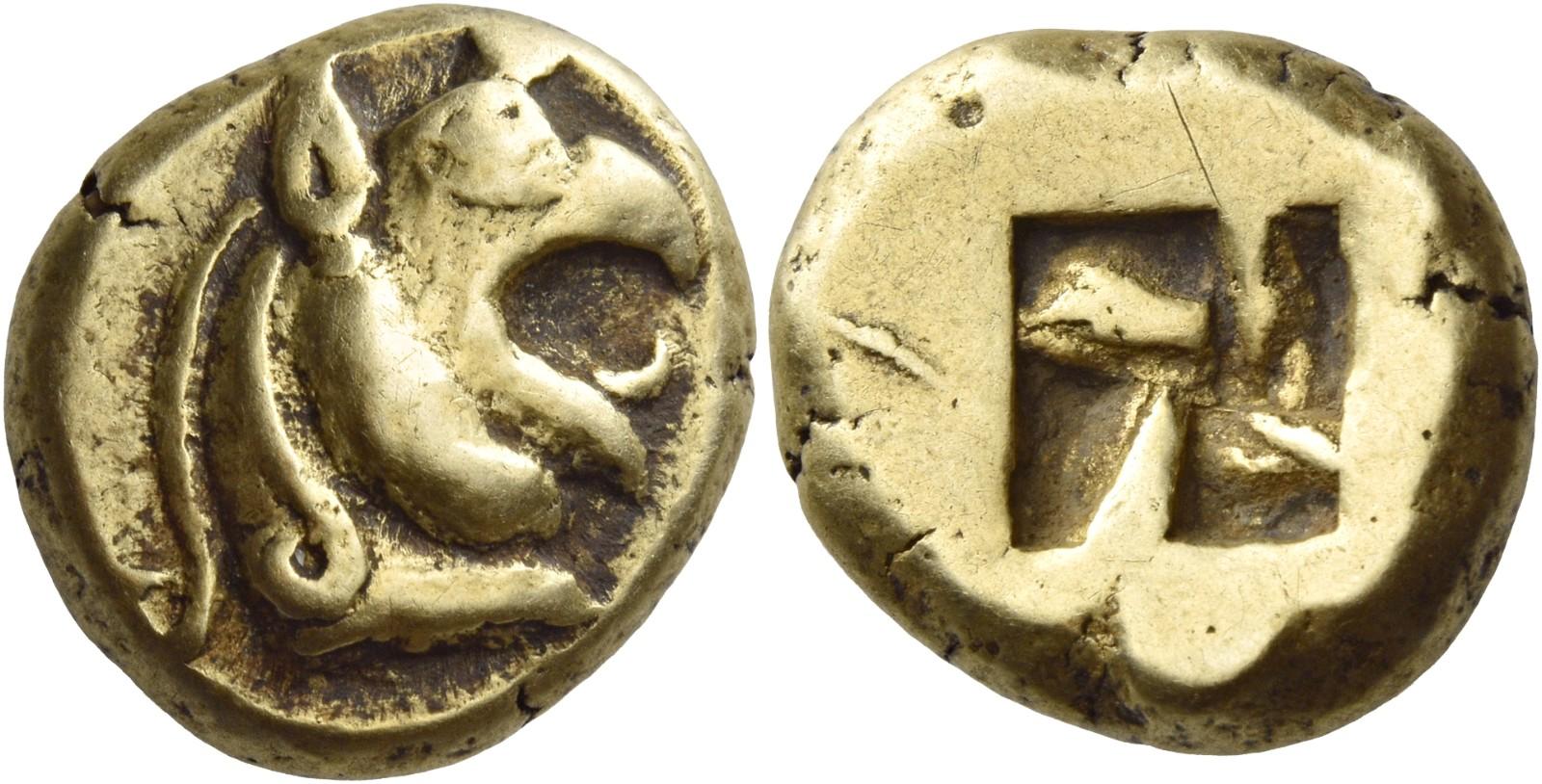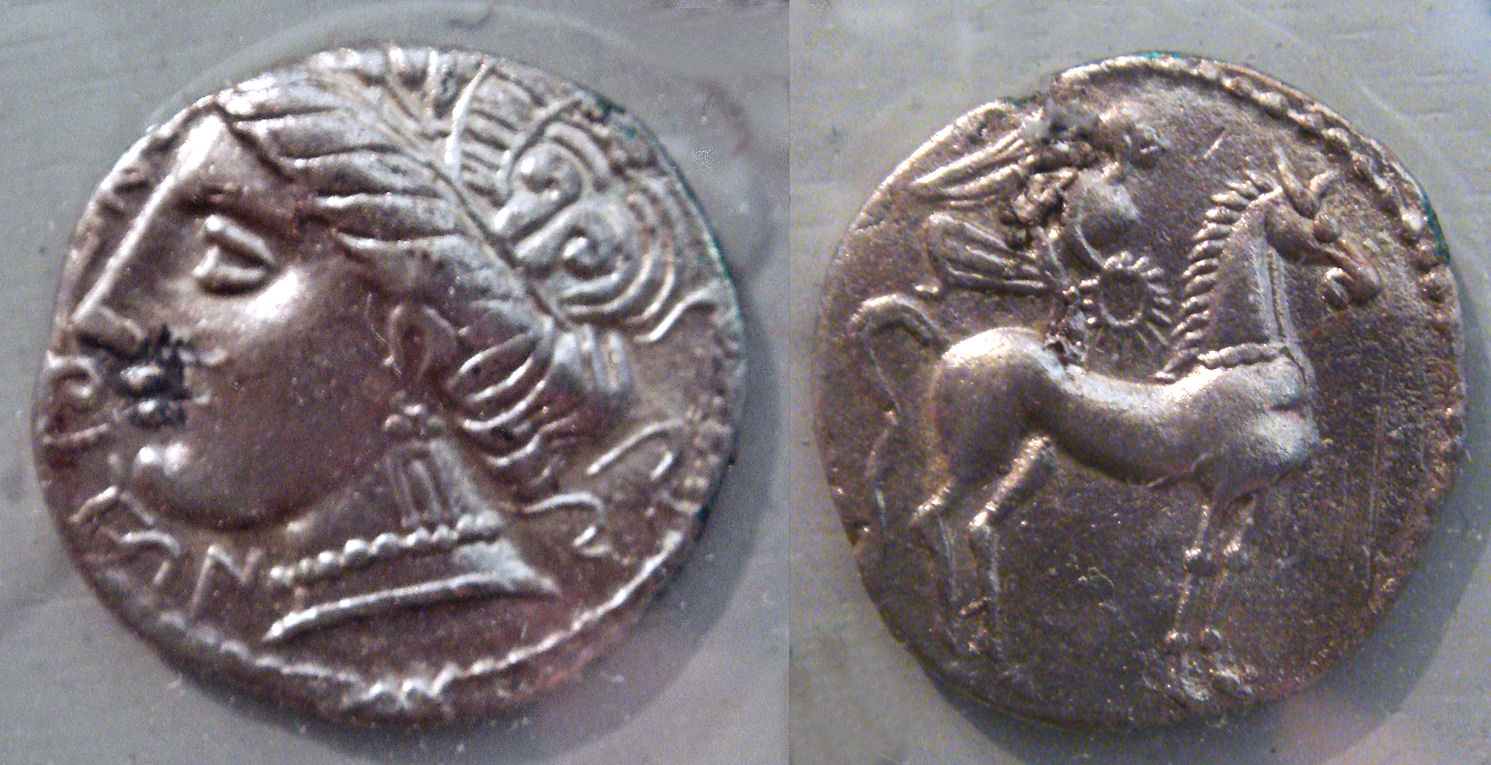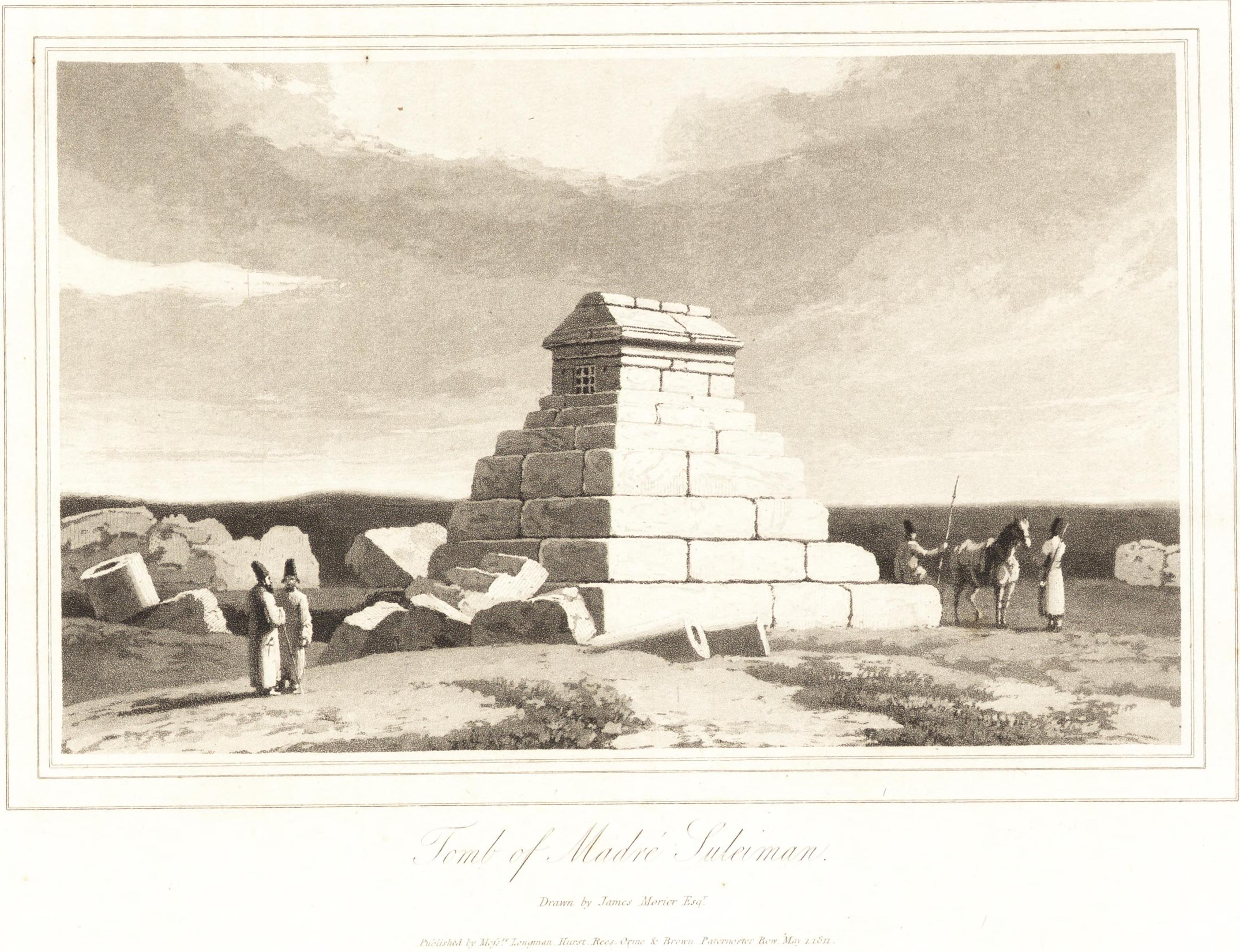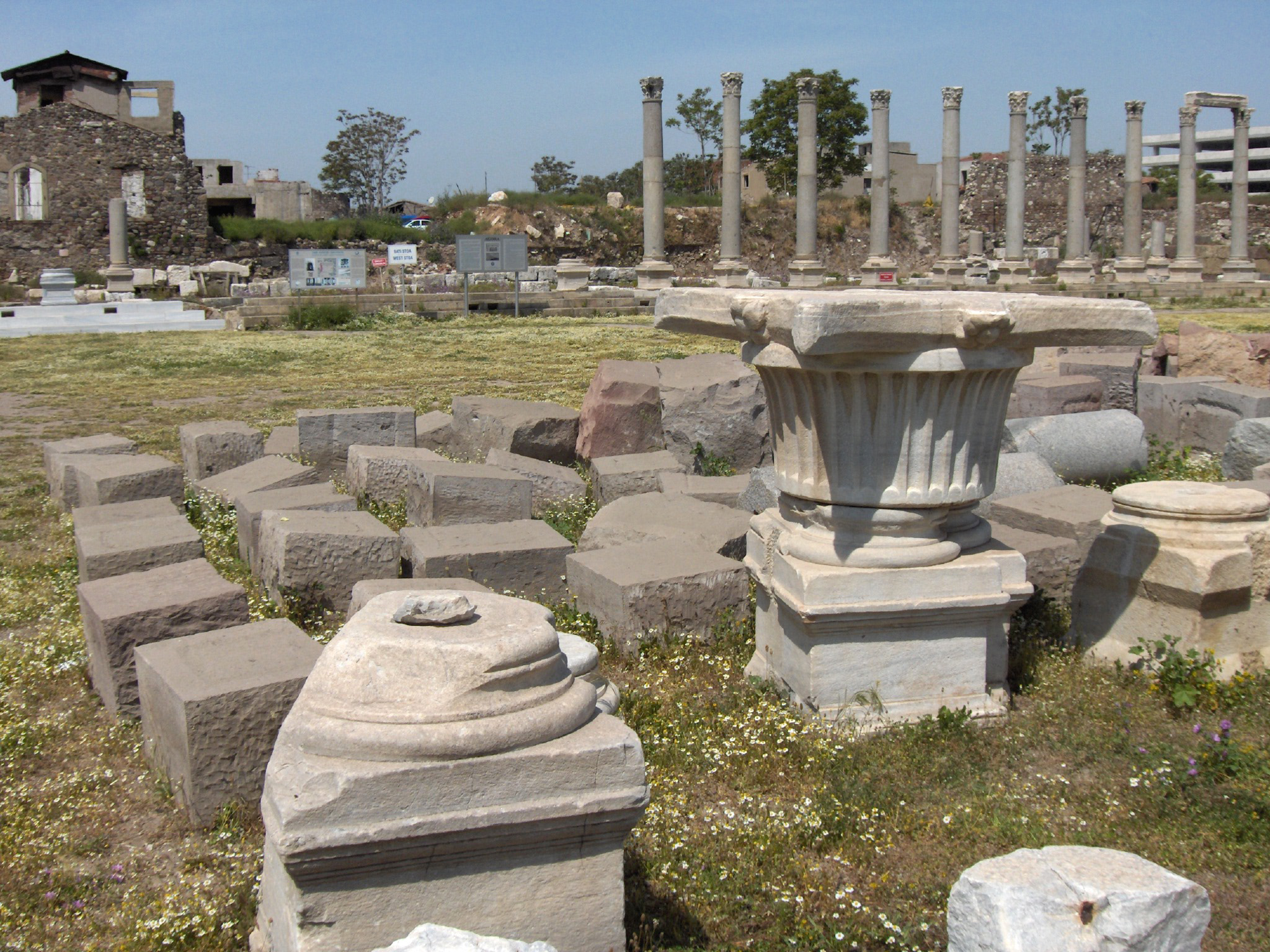|
Phocaean
Phocaea or Phokaia (Ancient Greek: Φώκαια, ''Phókaia''; modern-day Foça in Turkey) was an ancient Ionian Greek city on the western coast of Anatolia. Greek colonists from Phocaea founded the colony of Massalia (modern-day Marseille, in France) in 600 BC, Emporion (modern-day Empúries, in Catalonia, Spain) in 575 BC and Elea (modern-day Velia, in Campania, Italy) in 540 BC. Geography Phocaea was the northernmost of the Ionian cities, on the boundary with Aeolis. It was located near the mouth of the river Hermus (now Gediz), and situated on the coast of the peninsula separating the Gulf of Cyme to the north, named for the largest of the Aeolian cities, and the Gulf of Smyrna (now İzmir) to the south. Phocaea had two natural harbours within close range of the settlement, both containing a number of small islands. Phocaea's harbours allowed it to develop a thriving seafaring economy, and to become a great naval power, which greatly influenced its culture ... [...More Info...] [...Related Items...] OR: [Wikipedia] [Google] [Baidu] |
Foça
Foça is a municipality and Districts of Turkey, district of İzmir Province, Turkey. Its area is 251 km2, and its population is 34,946 (2022). The town of Foça is situated at about northwest of İzmir's city center on the Aegean Sea, Aegean coast. The district has a settlement and former municipality named Yenifoça (literally ''"New Foça"''), also along the shore and at a distance of from Foça proper. For this reason, Foça itself is locally often called as Eskifoça (''"Old Foça"'') in daily parlance. The town is built on the site of the ancient Greek city of Phocaea (). History The town of Phocaea (Φώκαια) was founded by ancient Greeks. Phocaea, named after the seals living in nearby islands, was founded by the Aeolians, Aeolian Greeks in the 11th century BC. Ionians, Ionian Greek settlement in Phocaea, which was one of the most important settlements of Ionia at that time, started in the 9th century BC. Phocaeans, known as master sailors in history, also est ... [...More Info...] [...Related Items...] OR: [Wikipedia] [Google] [Baidu] |
Massalia
Massalia (; ) was an ancient Greek colonisation, Greek colony (''apoikia'') on the Mediterranean Sea, Mediterranean coast, east of the Rhône. Settled by the Ionians from Phocaea in 600 BC, this ''apoikia'' grew up rapidly, and its population set up many outposts for trading in modern-day Spain, Corsica and Liguria. Massalia persisted as an independent colony until the Roman campaign in Gaul in the 1st Century BC. The ruins of Massalia still exist in the contemporary city of Marseille, which is considered the oldest city of France and one of Europe's oldest continuously inhabited settlements. History Massalia was established ca. 600 BC by Ionian Greeks, Ionian Greek settlers from Phocaea, in Western Anatolia. After the capture of Phocaea by the Persians in 545 BC, a new wave of settlers fled towards the colony. A creation myth telling the meeting between the Greeks and the local population is given by Aristotle and Gnaeus Pompeius Trogus, Pompeius Trogus (see founding myth of ... [...More Info...] [...Related Items...] OR: [Wikipedia] [Google] [Baidu] |
Empúries
Empúries ( ) was an ancient Greek city on the Mediterranean coast of Catalonia, Spain. The city Ἐμπόριον (, Emporion, meaning "trading place", ''cf.'' emporion) was founded in 575 BC by Greeks from Phocaea. After the invasion of Gaul from Iberia by Hannibal the Carthaginian general in 218 BC, the city was occupied by the Romans (Latin: ). In the Early Middle Ages, the city's exposed coastal position left it open to marauders and it was abandoned. Empúries is located within the Catalan comarca of Alt Empordà on the Costa Brava. The ruins are midway between the town of L'Escala and the tiny village of Sant Martí d'Empúries. History Empúries was founded on a small island at the mouth of the river Fluvià, in a region inhabited by the Indigetes (at the present time, the mouth of the Fluvià is about 6 km to the north). This city came to be known as the ''Palaiapolis'', the "old city" when, towards 550 BC, the inhabitants moved to t ... [...More Info...] [...Related Items...] OR: [Wikipedia] [Google] [Baidu] |
Velia
Velia was the Roman name of an ancient city on the coast of the Tyrrhenian Sea. It is located near the modern village of Novi Velia near Ascea in the Province of Salerno, Italy. It was founded by Greeks from Phocaea as Hyele () around 538–535 BC. The name later changed to Ele and then Elea (; ) before it became known by its current Latin and Italian name during the Roman era. The city was known for being the home of the philosophers Parmenides and Zeno of Elea, as well as the Eleatic school of which they were a part. Geography The site of the acropolis of ancient Elea was once a promontory called Castello a Mare, meaning "castle on the sea" in Italian. It now lies inland and was renamed Castellammare della Bruca in the Middle Ages. The city later developed on the coastal plain below. History According to Herodotus, in 545 BC Ionian Greeks fled Phocaea, in modern Turkey, which was being besieged by the Persians. After some wanderings (8 to 10 years) at ... [...More Info...] [...Related Items...] OR: [Wikipedia] [Google] [Baidu] |
Ionian League
The Ionian League (; , ; or , , in ), also called the Panionic League, was a confederation formed at the end of the Meliac War in the mid-7th century BC comprising twelve Ionian Greek city-states (a dodecapolis, of which there were many others), and eventually thirteen city-states with the admission of Smyrna. The earliest union of city-states in the area was the Ionian League. The League survived through the Hellenistic and Roman periods, until the 3rd century AD. Overview The twelve ancient city-states were listed by Herodotus as:Herodotus. ''The Histories''1.142 *Miletus, Myus, and Priene — all located in Caria (a region in Asia Minor). The three Greek cities spoke the same Ionic subdialect. Starting from the 7th century BC, Greek-Carian bilinguals in Caria suggest the Carians shared their former ancestral land amicably with the Greeks. The Carian language is not Greek but is a remnant of the Anatolian language group that dominated Anatolia before being pushed out b ... [...More Info...] [...Related Items...] OR: [Wikipedia] [Google] [Baidu] |
Athens
Athens ( ) is the Capital city, capital and List of cities and towns in Greece, largest city of Greece. A significant coastal urban area in the Mediterranean, Athens is also the capital of the Attica (region), Attica region and is the southernmost capital on the European mainland. With its urban area's population numbering over 3.6 million, it is the List of urban areas in the European Union, eighth-largest urban area in the European Union (EU). The Municipality of Athens (also City of Athens), which constitutes a small administrative unit of the entire urban area, had a population of 643,452 (2021) within its official limits, and a land area of . Athens is one of the List of oldest continuously inhabited cities, world's oldest cities, with its recorded history spanning over 3,400 years, and its earliest human presence beginning somewhere between the 11th and 7th millennia BCE. According to Greek mythology the city was named after Athena, the ancient Greek goddess of wisdom, ... [...More Info...] [...Related Items...] OR: [Wikipedia] [Google] [Baidu] |
Phocis (ancient Region)
Phocis was an ancient region in the central part of ancient Greece, which included Delphi. A modern administrative unit, also called Phocis, is named after the ancient region, although the modern region is substantially larger than the ancient one. Geopolitically, Phocis was the country of the Phocians, who spoke their own version of Doric Greek, one of the three main dialects of ancient Greek. They were one of several small mountain states of Central Greece, whose dialects are classified as Northwest Doric. It was from their region that the Dorians crossed the Gulf of Corinth at the beginning of the Greek Iron Age to burn Pylos and other southern Greek strongholds and seize control of the Peloponnesus. The dialects of the two groups of Dorians north and south of the Gulf then began to diverge. One of the states around Phocis was still called Doris in classical times. As there is considerable evidence that the invasion began about 1000 BC, the ancestors of the classical Pho ... [...More Info...] [...Related Items...] OR: [Wikipedia] [Google] [Baidu] |
Pausanias (geographer)
Pausanias ( ; ; ) was a Greek traveler and geographer of the second century AD. He is famous for his '' Description of Greece'' (, ), a lengthy work that describes ancient Greece from his firsthand observations. ''Description of Greece'' provides crucial information for making links between classical literature and modern archaeology, which is providing evidence of the sites and cultural details he mentions although knowledge of their existence may have become lost or relegated to myth or legend. Biography Nothing is known about Pausanias apart from what historians can piece together from his own writing. However, it is probable that he was born into a Greek family and was probably a native of Lydia in Asia Minor. From until his death around 180, Pausanias travelled throughout the mainland of Greece, writing about various monuments, sacred spaces, and significant geographical sites along the way. In writing his '' Description of Greece'', Pausanias sought to put together ... [...More Info...] [...Related Items...] OR: [Wikipedia] [Google] [Baidu] |
Stater Coin Of Phokaia With Griffin
The stater (; ) was an ancient coin used in various regions of Greece. The term is also used for similar coins, imitating Greek staters, minted elsewhere in ancient Europe. History The stater, as a Greek silver currency, first as ingots, and later as coins, circulated from the 8th century BC to AD 50. The earliest known stamped stater (having the mark of some authority in the form of a picture or words) is an electrum turtle coin, struck at Aegina that dates to about 650 BC. It is on display at the Bibliothèque Nationale in Paris. According to Robin Lane Fox, the stater as a weight unit was borrowed by the Euboean stater weighing from the Phoenician shekel, which had about the same weight as a stater () and was also one fiftieth of a mina.Lane Fox, Robin. ''Travelling Heroes: Greeks and Their Myths in the Epic Age of Homer''. P. 94. London: Allen Lane, 2008. The silver stater minted at CorinthSmith, William. ''A Dictionary of Greek and Roman Antiquities''. J. ... [...More Info...] [...Related Items...] OR: [Wikipedia] [Google] [Baidu] |
Tomb Of Cyrus
The tomb of Cyrus the Great is located in Pasargadae, which was the first capital city of his Achaemenid Empire and is now an archaeological site in the Fars Province of Iran. Prior to being identified with Cyrus the Great by the British diplomat James Justinian Morier in 1812, it was attributed to a certain "Mother of Solomon" in legendary accounts that had emerged at some point after the Muslim conquest of Iran; Morier's understanding, drawing upon the works of the German traveller Johan Albrecht de Mandelslo, was that it referred to the Arab woman Wallada bint al-Abbas ibn al-Jaz, who was the mother of Sulayman ibn Abd al-Malik () of the Umayyad Caliphate. Similar beliefs suggested to the Venetian explorer Giosafat Barbaro in the 15th century asserted that it was the resting place of Bathsheba, who was the mother of Solomon () of the Kingdom of Israel and Judah. Morier ultimately dismissed the tomb's contemporary associations as fallacious, noting that its architecture ... [...More Info...] [...Related Items...] OR: [Wikipedia] [Google] [Baidu] |
Aeolis
Aeolis (; ), or Aeolia (; ), was an area that comprised the west and northwestern region of Asia Minor (modern-day Turkey), mostly along the coast, and also several offshore islands (particularly Lesbos), where the Aeolian Greek city-states were located. Aeolis incorporated the southern parts of Mysia, and is bounded by it to the north, Ionia to the south, and Lydia to the east. Geography Aeolis was an ancient district on the western coast of Asia Minor. It extended along the Aegean Sea from the entrance of the Hellespont (now the Dardanelles) south to the Hermus River (now the Gediz River). It was named for the Aeolians, some of whom migrated there from Greece before 1000 BC. Aeolis was, however, an ethnological and linguistic enclave rather than a geographical unit. The district often was considered part of the larger northwest region of Mysia. History According to Homer's ''Odyssey'', Odysseus, after his stay with the Cyclopes, reached the floating island of Aeolia, wh ... [...More Info...] [...Related Items...] OR: [Wikipedia] [Google] [Baidu] |
Stadion (unit)
The stadion (plural stadia, ; latinized as stadium), also anglicized as stade, was an ancient Greek unit of length, consisting of 600 Ancient Greek feet ('' podes''). Its exact length is unknown today; historians estimate it at between 150 m and 210 m. Calculations According to Herodotus, one stadium was equal to 600 Greek feet (''podes''). However, the length of the foot varied in different parts of the Greek world, and the length of the stadion has been the subject of argument and hypothesis for hundreds of years. An empirical determination of the length of the stadion was made by Lev Vasilevich Firsov, who compared 81 distances given by Eratosthenes and Strabo with the straight-line distances measured by modern methods, and averaged the results. He obtained a result of about . Various equivalent lengths have been proposed, and some have been named. Among them are: Which measure of the stadion is used can affect the interpretation of ancient texts. For example, the ... [...More Info...] [...Related Items...] OR: [Wikipedia] [Google] [Baidu] |





